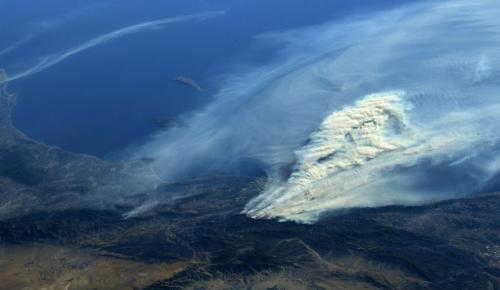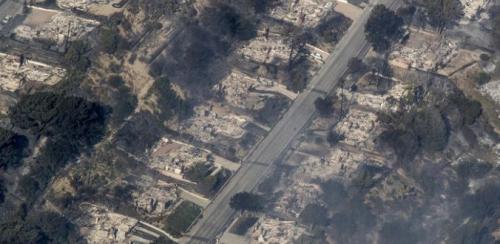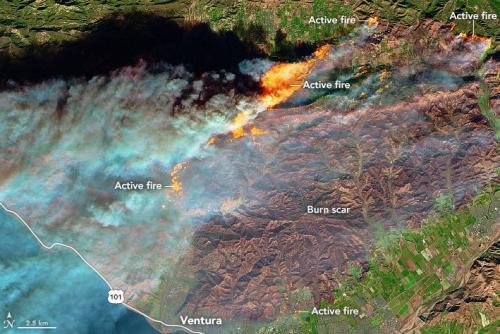Steve Bull's Blog, page 1236
December 8, 2017
Beware the Green Corporate Scam: the 100% Renewable Façade
A few months ago, Google announced that they will achieve their goal of being 100% powered by renewable energy in 2017 [1]. They are not the only corporation with such lofty goals. Google is joined by GM, Apple, Coca Cola, and more than one hundred companies who have also pledged to go “100% renewable” [2].
It would be easy to believe that this means a great victory for the planet, that the demise of fossil fuels is incoming, that environmentalism has won and that climate change will soon be a thing of the past. Yet the foul smell emerging from tax-dodging transnationals jumping all together into a bandwagon cannot be ignored.
Despite their claims, none of the companies in the RE100 list is actually going to receive all of its energy from renewable sources. The “100% renewable” label is a façade, a marketing gimmick used by corporations to pretend they are the good guys while their unfettered thirst for profits continues unopposed. This corporate lie is enabled by the abuse of Renewable Energy Certificates (RECs) which allow companies to buy their way into “green” without having to change any of their practices. Here is Google’s actual claim:
“Google will buy, on an annual basis, the same amount of MWh of renewable energy as the MWh of electricity that we consume for our operations around the world” [3].
Behold the magic of the RECs. When a renewable energy facility creates one MWh of energy, it not only creates electricity, it also gets a certificate, a REC, which states that one MWh of clean energy was created. The REC can then be sold, either together with the electricity or separate from it.
…click on the above link to read the rest of the article…
Pool of Funding the Heart of Economic Growth
Most experts are of the view that massive monetary pumping by the US central bank, the Fed, during the 2008 financial crisis saved the US and the World from another Great Depression.
If increases in money supply is an important catalyst for economic growth then the World poverty should have been eliminated a long time ago! Most countries have central banks that know how to print money – why then the World poverty still exists?
We suggest that at no stage increases in money supply can be an important driving factor of economic growth.
Some experts do not agree with this. Following the logic that monetary spending by one individual becomes an income of another individual and the spending of another individual becomes an income of the first individual, they hold that this raises the economy’s overall income and in turn overall economic growth.
Note that in this way of thinking, money stimulates consumer outlays, which in turn strengthens overall income and overall economic activity i.e. demand creates supply.
In this way of thinking what funds i.e. provides support to economic growth is the increase in money supply.
We suggest that individuals, which are engaged in the various stages of production, in order to support their lives and wellbeing, require an access to final consumer goods and not money as such.
At any point in time, there is a finite pool of final consumer goods. Hence, the early recipients of a newly created money are going to benefit from the increase in money supply at the expense of the late recipients or no recipients at all of the newly created money.
…click on the above link to read the rest of the article…
December 7, 2017
Warning: ‘They Need The Markets To Implode’ To Usher In Cashless System

Market analyst Lynette Zang predicts in the next market meltdown, “real estate, stocks, and bonds will all crash.” When asked when this will happen, Zang says, “Enjoy your Christmas,” but in 2018, all bets are off.
Greg Hunter interviewed Lynette Zang, Chief Market Strategist at ITMtrading.com, and her assessment of the 2018 economy is dire. Zang predicts, “In 2018, I don’t think they can hold these things together. I think we will see a major market correction in 2018. When that happens, that will cause the derivative implosion. We have to feel a lot of pain. . . . I think we are going to go into hyperinflation, and I think we will start to see that in 2018 because I think we will see these markets implode. I think we will see QE4 (money printing) for sure. . . . We have QE right now propping it up, according to the Fed’s own documents.”
Zang says ever since the 2008 meltdown, the elite have just been buying time to set up a debt reset.
“I am 100% certain we are in the middle of a money standard shift. Ultimately, they need the markets to implode. . . . In 2008, the debt based system broke. It died, it was done. The central banks, globally, put it on life support, and they have to create a new system. In my opinion, they want us cashless, and they want everything in digital form. They want to dematerialize wealth at least for the masses. I am 100% certain that this Bitcoin craze, and all of this, is about getting people used to digital currencies. So, when they shift us from the debt based system to the digital system, we are more comfortable with it and more familiar with it.”
…click on the above link to read the rest of the article…
Hurricane-Force Winds Fan SoCal Wildfires As 200,000 Residents Flee Their Homes
At least four devastating wildfires continued to ravage Southern California from Ventura County south to Los Angeles, as the stifling smoke and flames drove tens of thousands of people living in the Los Angeles area from their homes in an eerie replay of the fires that decimated Northern California’s wine country two months ago.
Officials in Southern California have warned that powerful winds (as high as 80 mph in some spots, the same speed as a low-level hurricane) would continue to fan the flames after returning overnight. So far, more than 200,000 people have evacuated their homes and many more are expected to flee. The Los Angeles Fire Department has ordered the evacuation of the 20.5 square miles including and surrounding the Creek Fire, which jumped the 210 Freeway and is threatening Santa Ana’s Sylmar and Lake View Terrace neighborhoods. The Rye Fire in Santa Clarita prompted the shutdown of Highway 5, according to Mashable.
“We are in the beginning of a protracted wind event,” said state fire chief Ken Pimlott.
“There will be no ability to fight fire in these kinds of winds,” Pimlott said. “At the end of the day, we need everyone in the public to listen and pay attention. This is not ‘watch the news and go about your day.’ This is pay attention minute-by-minute … keep your head on a swivel.”
According to the Los Angeles Times, communities both on the coast and inland were under threat. At 4 a.m., officials closed the 101 Freeway between Routes 126 and 150. According to the California Highway Patrol, that left no open routes between Santa Barbara and Ventura counties. Fires were also burning on the north and east side of Highway 150 and on the west side of Highway 33.
…click on the above link to read the rest of the article…
Going off-grid in the UK
 In my recent post featuring a residence in Tucson, Arizona (latitude 32 north) I found that no reasonable number of Tesla Powerwalls would allow the homeowner to go off-grid using a combination of solar and battery storage. In this post I review a residence in UK (latitude 52 north) and find, unsurprisingly, that its prospects for going off-grid with solar and Powerwalls are likewise non-existent. Further reviews show that the overgeneration approach does not work well in the UK either. The only presently-available option for a UK homeowner with a solar array who wants to go off grid is to combine solar with a backup generator.
In my recent post featuring a residence in Tucson, Arizona (latitude 32 north) I found that no reasonable number of Tesla Powerwalls would allow the homeowner to go off-grid using a combination of solar and battery storage. In this post I review a residence in UK (latitude 52 north) and find, unsurprisingly, that its prospects for going off-grid with solar and Powerwalls are likewise non-existent. Further reviews show that the overgeneration approach does not work well in the UK either. The only presently-available option for a UK homeowner with a solar array who wants to go off grid is to combine solar with a backup generator.
Solar Generation
The solar array I chose as my UK example is on the roof of 10 Mossbank Way, Shrewsbury (data from Sunny Portal). With a capacity of 4kWp (16 Sanyo HIT-H250E01 panels), total 2016 generation of 3,809 kWh and a capacity factor of 10.8% it’s about as average as you can get for a rooftop UK system:
10 Mossbank Way, Shrewsbury
Daily average solar generation from Mossbank during 2016, the last full year for which data are available, is shown in Figure 1. Average power output was highest in May (0.71kW) and lowest in January and December (0.13kW) – a seasonal range of more than a factor of five:
Figure 1: Mossbank average daily solar generation, 2016 (a plot of hourly solar generation for the entire year is hard to interpret). The red lozenges are monthly means
Hourly solar generation data for May and January are shown in Figure 2 for illustration purposes. The large differences in total generation and the abundance of January days with minimal solar generation are apparent:
Figure 2: Mossbank hourly solar generation, January and May 2016
…click on the above link to read the rest of the article…
Siberian Volcano Suddenly Erupts
While all eyes have been on the volcano in Bali, the Siberian Shiveluch Volcano erupted yesterday for over a 20 minutes spewing ash 6 miles (10 kilometers) high into the sky. The 1963 eruption in Bali was one of the largest and most devastating eruptions in Indonesia’s history. Nevertheless, it was still only a VEI5. Ideally, an eruption in Bali was due from a cyclical perspective in 2018.
In the case of the Siberian Shiveluch Volcano, there have been significant eruptions taking place in 1854 and 1956. The most recent eruption began again on August 15, 1999, and have continued periodically when on February 27th, 2015, Shiveluch erupted spewing ash into the atmosphere about 30,000 feet crossing the Bering Sea and into Alaska. From a cyclical perspective, this particular volcano was due to start again in 2017.
If we continue to get several volcanoes erupting into 2018, then this should be an active period and it will contribute to Global Cooling. Our models of food prices appear to be rising after 2018 moving into 2024. This would tend to indicate that we may indeed be looking at a rising in the volcanic activity in many places.
Major study shows species loss destroys essential ecosystems
Long term research by German ecologists proves that loss of biodiversity has “direct, unpleasant consequences for mankind.”
Two days ago, C&C published a reply to a biology professor who shrugged off species extinction as unimportant because evolution will replace the lost organisms. This report, adapted from a Technical University of Munich news release, thoroughly confirms our view that he was dead wrong.

Due to its breadth, the Jena experiment proves for the first time that a loss of biodiversity has negative consequences for many individual components and processes in ecosystems.
How serious is the loss of species globally? Are material cycles in an ecosystem with few species changed? In order to find this out, the “Jena Experiment” was established in 2002, one of the largest biodiversity experiments worldwide. Professor Wolfgang Weisser from the Technical University of Munich (TUM) reports on two unexpected findings of the long-term study: Biodiversity influences almost half the processes in the ecosystem, and intensive grassland management does not result in higher yields than high biodiversity.
An ecosystem provides humans with natural “services”, such as the fertility of the soil, the quality of the groundwater, the production of food, and pollination by insects, which is essential for many fruits. Hence, intact ecosystems are crucial for the survival of all living things. What functional significance therefore does the extinction of species have? Can the global loss of species ultimately lead to the poorer “functioning” of ecosystems? Professor Weisser from the Chair for Terrestrial Ecology at the TUM has summarized the findings of the long-term “Jena Experiment” in a 70-page article in the journal Basic and Applied Ecology.
“One unique aspect of the Jena Experiment is the fact that we performed our experiments and analyses over 15 years”, explains Prof. Weisser. “Because the influence of biodiversity is only visible after a delay, we were only able to observe certain effects from 2006 or 2007 onwards — i.e. four or five years after the beginning of the project.”
…click on the above link to read the rest of the article…
The Cognitive Prison Habits of Economic Growth and Development
This post grew out of a recent facebook discussion. Hat Tip to Bruce Kunkel for the title phrase “Cognitive Prison Habits.”
George Monbiot recently made some important points and asked questions we all should be giving some thought to.
“Green consumerism, material decoupling, sustainable growth: all are illusions, designed to justify an economic model that is driving us to catastrophe.”
“The promise of economic growth is that the poor can live like the rich and the rich can live like the oligarchs. But already we are bursting through the physical limits of the planet that sustains us.”
I would add the aphorism that “When you find yourself in a hole, rule #1 is to stop digging.”
The International Energy Agency has just released their yearly World Energy Outlookreport, which tells us that current policies put us in a scenario that would add the equivalent of another China and India to today’s global demand for energy by 2040, and greenhouse gas reduction polices currently in play or being considered are “far from enough to avoid severe impacts of climate change.”
While the title of Monbiot’s post mentions consumerism trashing the planet, consumerism is not the fundamental problem (us) that he is addressing, nor is it unrestrained corporate power (them). More fundamental, giving rise to both of the above polarities, is the almost unquestioned commitment to growth that is built in to most of our systems. In Monbiot’s words:
” The promise of private luxury for everyone cannot be met: neither the physical nor the ecological space exists.
But growth must go on: this is everywhere the political imperative. And we must adjust our tastes accordingly…
…click on the above link to read the rest of the article…
Middle East Tensions Near Boiling Point

The 38th Gulf Cooperation Council (GCC) Summit resulted in a showdown between Qatar and its Saud-led alliance counterparts.
Saudi King Salman decided to send a lower diplomatic delegation in his place, chipping away at the stability in the region. Additionally, in an unexpected move, Saudi Arabia and the United Arab Emirates (UAE) announced that the two countries have formed a new economic and military partnership, separate from the GCC. Arab analysts have already indicated that this could deal a deadly blow to the role of the GCC.
Officially, the decision made by UAE’s ruler Sheikh Khalifa bin Zayed Al Nayhan and the Saudi King is not linked to the ongoing Qatar crisis. However, the symbiosis currently showing between Saudi crown prince Mohammed bin Salman and Abu Dhabi’s crown prince Sheikh Mohammed bin Zayed is the main force behind this bilateral cooperation agreement.
The direct impact wasn’t clear within the first few hours of the GCC meeting. Analysts speculated how the news of the fresh Saudi-Emirati military and economic cooperation would impact the six-member GCC meeting. Until the new alliance was announced, the media was primarily focused on the ongoing Qatar crisis, especially due to the fact that the Qatari Emir was in attendance. Insiders, however, already expected that the new agreement would have a detrimental effect on the GCC meeting, given the impact of the council’s two main supporters decided to create their own military, political, and economic alliance.
Riyadh and Abu Dhabi have clearly been paving the way for a confrontation with Iran and Qatar for several months, while also setting up major economic projects in their own countries as they coordinate military operations in Yemen, Syria and Libya. Two weeks ago, Emirati analysts indicated that the UAE would take a primary role in regional conflicts, which has now come to the surface more clearly.
…click on the above link to read the rest of the article…
What Is Money? (Yes, We’re Talking About Bitcoin)
Good ideas don’t require force. That describes the Internet, mobile telephony and cryptocurrencies.
What is money? We all assume we know, because money is a commonplace feature of everyday life. Money is what we earn and exchange for goods and services. Everyone thinks the money they’re familiar with is the only possible system of money—until they run across an entirely different system of money.
Then they realize money is a social construct, a confluence of social consensus and political force– what we agree to use as money, and what our government mandates we use as money under threat of punishment.
We assume that our monetary system is much like a Law of Nature: since it’s ubiquitous, it must be the only possible system.
But there are no financial Laws of Nature for money. In the past, notched sticks served as money. In other non-Western cultures, giant stone disks (rai, a traditional form of money on the island of Yap) and even salt served as money.
In our experience, 1) money is issued by a government or central bank (i.e. a currency), and each of these currencies is the sole form of legal money (legal tender) in the nation-state that issues the currency; 2) each of these currencies is available in physical coins and paper bills and digitally as entries in bank and credit card accounts; 3) our currency is borrowed into existence by the central bank or by fractional reserve lending in private banks, and 4) this currency meets all of the utility traditionally required of money:
1. It is divisible into smaller units, i.e. a dollar is divided into quarters, dimes, nickels and pennies, or it is a small unit (for example, the Japanese yen, which is roughly equivalent to a U.S. penny).
2. It is secure, i.e. everyone can’t just print or make their own in unlimited quantities.
…click on the above link to read the rest of the article…










